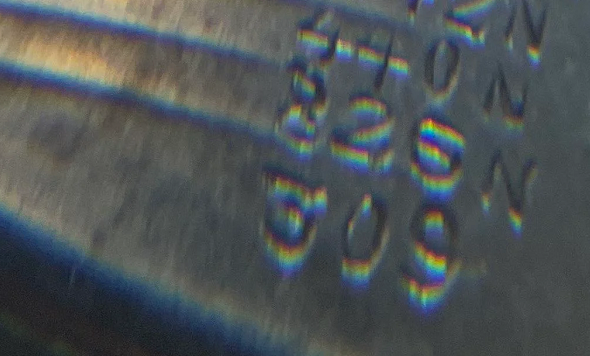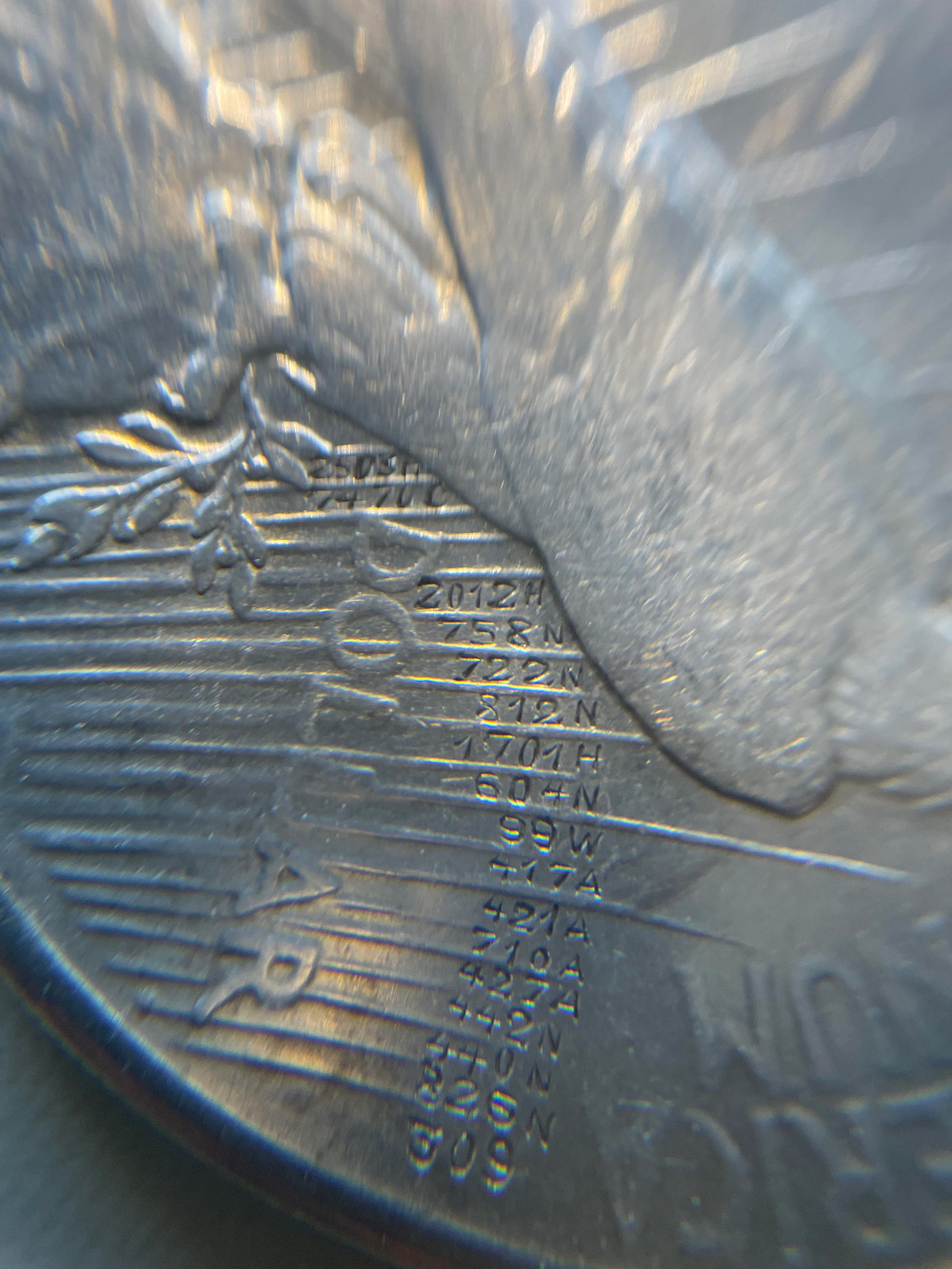In eine Silbermünze aus dem Jahr 1924 ist von Hand eine verschlüsselte Nachricht eingraviert. Kann ein Leser diese Botschaft dechiffrieren?
English version (translated with DeepL)
Bei meiner Suche nach spannenden Kryptogrammen bin ich mal wieder in der Gruppe /r/Codes auf Reddit fündig geworden. Dort hat vor vier Wochen ein User namens “gbennett7713” ein Foto von einer Münze veröffentlicht, auf der ein möglicherweise verschlüsselter Text von Hand eingraviert ist. Soweit ich sehe, hat bisher niemand die Lösung gefunden.
Die Botschaft auf dem Peace-Dollar
Hier ist ein Bild der besagten Botschaft:
Die Münze ist ein so genannter Peace-Dollar aus den USA. Dabei handelt es sich um eine Silbermünze, die von 1921 bis 1928 und von 1934 bis 1935 geprägt wurde. Ein Peace-Dollar ist deutlich mehr wert als ein Dollar. Je nach Typ und Erhaltungszustand zahlen Sammler einige Dutzend bis einige Tausend Euro dafür.
Das Münzexemplar, um das es hier geht, wurde im Jahr 1924 geprägt. Ein Historiker würde dies als “Terminus post quem” bezeichnen, also als den frühesten Zeitpunkt, zu dem die Gravur geschaffen worden sein kann. Einen “Terminus ante quem”, also einen spätestmöglichen Zeitpunkt, zu finden, ist leider nicht ganz so einfach.
Hier ist eine auf Reddit gegebene Transkription:
2503H (oder A) 7470C 2012H 758N 722N 812N 1701H 604N 99W 417A 421A 710A 427A 442N 440N 826N 309
Lösungsansätze
Der Verfasser des Reddit-Posts schreibt, dass die Münze ursprünglich von einem Veteranen des Zweiten Weltkriegs stammt und dass der Klartext der Botschaft “December 11, 1941. Wake Island” heißen könnte.
Wake Island ist eine zu den USA gehörende Insel im Pazifik, die die Japaner am 11. Dezember 1941, also kurz nach Pear Harbor, angriffen. Diesen Angriff konnten US-Truppen zwar abwehren, doch 12 Tage später war ein zweiter Invsionsversuch erfolgreich. Die Japaner konnten Wake Island anschließend bis zum Ende des Kriegs 1945 halten.
Ob der Klatext tatsächlich “December 11, 1941. Wake Island” lautet, ist mir nicht bekannt. Ebenso wenig weiß ich, welches Verschlüsselungsverfahren hier eingesetzt worden sein soll. Eine Buch-Chiffre oder ein Wörterbuch-Code wären möglich.
Es kann allerdings auch sein, dass es sich gar nicht um eine verschlüsselte Nachricht handelt. Vielleicht hat hier jemand Wetterdaten oder eine Messreihe notiert.
Schließlich ist die Frage, warum jemand eine solche Botschaft in eine Münze ritzt. Soweit ich es verstehe, ist ein Peace-Dollar kein Zahlungsmittel, sondern ein Sammlerstück. Ein solches verunstaltet man üblicherweise nicht ohne Grund. Die geringe Größe der Gravur spricht dafür, dass diese nicht auffallen sollte.
Kann ein Leser mehr zum Peace-Dollar-Kryptogramm sagen?
Follow @KlausSchmeh
Further reading: Who can decipher these inscriptions on a Freemason medal?
Linkedin: https://www.linkedin.com/groups/13501820
Facebook: https://www.facebook.com/groups/763282653806483/





Kommentare (5)